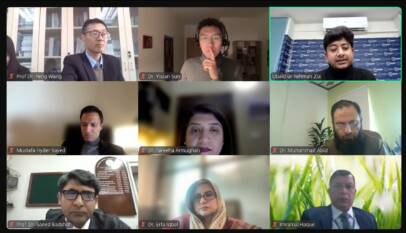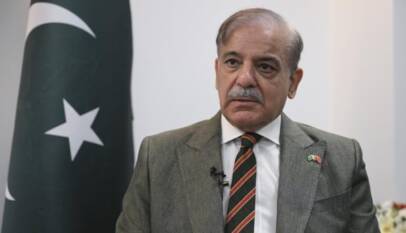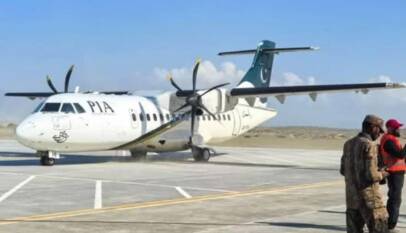The Importance of “Two Sessions 2022” for China and Pakistan
According to an article published by China Economic Net, the National People’s Congress (NPC) and the Chinese People’s Political Consultative Conference (CPPCC), colloquially known as the “Two Sessions,” are crucial for China’s economic, political, and diplomatic agendas in the coming year. Chinese Premier Li Keqiang stated on the first day of the 13th National People’s Congress in Beijing on March 5 that China will actively increase imports of high-quality goods and services. This provides Pakistan with an opportunity to achieve export-led growth while improving its balance of payments and foreign exchange reserves. More emphasis is being placed on enhancing goods trade between China and Pakistan in the two countries’ Free Trade Agreement Phase-II, as well as in the second phase of CPEC.
BEIJING:China’s National People’s Congress (NPC) and the Chinese People’s Political Consultative Conference (CPPCC), short-termed “Two Sessions”, being held this month are significant for the economic, political and diplomatic agenda that China will set for itself for the coming year.
The government work report delivered by Chinese Premier Li Keqiang at the opening of this year’s session of the 13th National People’s Congress in Beijing on March 5 stipulates that China will actively increase imports of quality products and services. It will explore new ways to develop trade in services and digital trade.
The reform to simplify customs clearance will be deepened and the building of an international logistics system will be accelerated to help lower costs and raise efficiency in foreign trade, according to an article published by China Economic Net.
This is an opportunity for Pakistan to achieve export-led growth and improve its balance of payments as well as foreign exchange reserves. In the Free Trade Agreement Phase-II signed between China and Pakistan and under the second phase of CPEC, there is more attention being paid to enhance the trade of goods between both sides. Pakistan manufactures high quality surgical goods, textiles, and leather, and has huge potential of tapping the Chinese demand for beef, chicken and lamb that China is currently importing from Brazil and the United States.
The work report makes a particular reference to the Belt and Road Initiative, through which China will enhance connectivity and open up new avenues of cooperation. Of Pakistan’s interest is that during China’s fourteenth “Five-Year Plan” period, new land-sea routes for its western region will be further developed. Since western China borders on Gilgit-Baltistan, Pakistan, connecting these border regions has always been part of the long-term plan of China-Pakistan Economic Corridor (CPEC). Connectivity of China’s western region including but not limited to Xinjiang with Pakistan’s Gwadar port will provide impetus for these regions by allowing the industries to enter the Middle-Eastern and Persian Gulf markets. For Pakistan, it means an impetus of much-needed infrastructure development.
Another highlight of the work report is China’s aspiration to achieve carbon neutrality and discontinue high-emission projects, and its calling for a transition from fossil fuel-based projects to alternate and renewable energy projects. For this purpose, the Chinese government undertakes and supports the building of large-scale wind and photovoltaic power bases with supporting power sources that are adjustable, and boosts the capacity of power grids to absorb electricity generated from renewable energy sources. Since Pakistan is among top 10 countries most affected by climate change, this can be an important area of cooperation between both countries by implementing a green Belt and Road framework while tying in with the Pakistan government’s recently unveiled renewable energy policy and the Ten Billion Tree Tsunami Project- both of which are linked to sustainable economic development and a lower carbon footprint.
It is imperative that Pakistan synergizes its CPEC Phase II preparations with the work report newly-released by the Chinese government and identifies areas of prospective collaboration in the post-pandemic world.
While the challenges from Covid-19 have not ended, the opportunities for both countries for enhanced cooperation outweigh the risks and challenges that they face.
Experts highlight green SEZs under CPEC for sustainable development
ISLAMABAD – The experts on Monday emphasised the significance of enhanced collabor…













